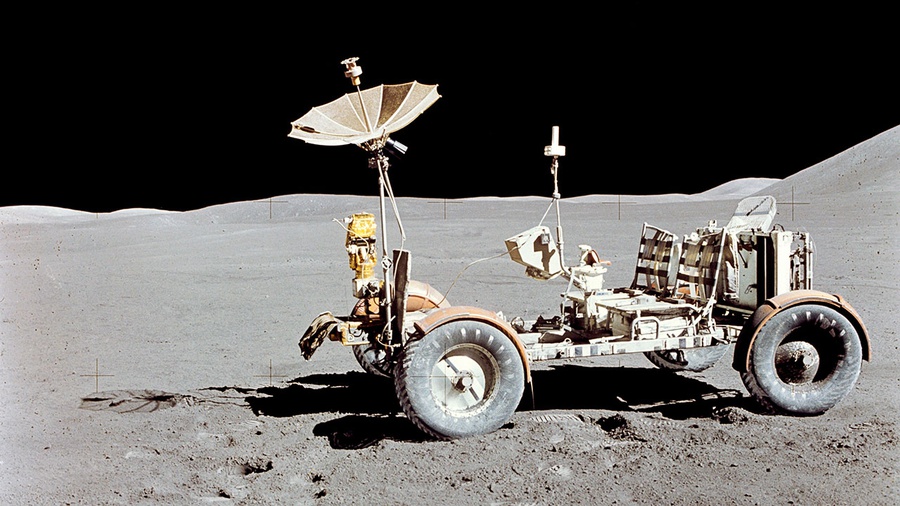Goodyear is already working on an airless tire, including testing prototypes on simulated lunar regolith rigs. The final sample should work for years in a vacuum, on the moon's cratered surface at temperatures ranging from -250 to 250 degrees Fahrenheit (156 to 121 degrees Celsius).
Chris Helsel, Goodyear's senior vice president of global operations and chief technology officer, said that the experience gained in the development of "space" tires in the future will help the company make the best airless tires for terrestrial vehicles.
This is not Goodyear's first experience with a lunar program. The company has already supplied components for the Apollo missions, in particular, inflatable bags for splashing the capsule with astronauts into the ocean and, of course, the wheels of moon rovers.
American astronauts used lunar rovers during the Apollo 15, Apollo 16, and Apollo 17 missions. These lightweight vehicles could travel only a few miles from the landing site, but provided the astronauts with a faster way to get around.
A new lunar rover for the Artemis project is being developed by Lockheed Martin and General Motors. The developers were tasked with making these machines reliable and more versatile. It is assumed that in addition to NASA, the device will be able to use commercial companies and space agencies of other countries that want to take part in the study of the Earth's natural satellite.
Artemis is NASA's manned space program to send people to the moon. The test flight of the multipurpose Orion spacecraft is scheduled for August 2022 after several transfers.
The flight to the Moon of a ship with a crew of four, with the planned landing of two of them on the surface of the Earth's satellite, will take place no earlier than 2025. As part of the Artemis 1 mission, a woman is to fly to the moon for the first time.
The last landing of NASA astronauts on the moon took place in December 1972.
Source: Goodyear


